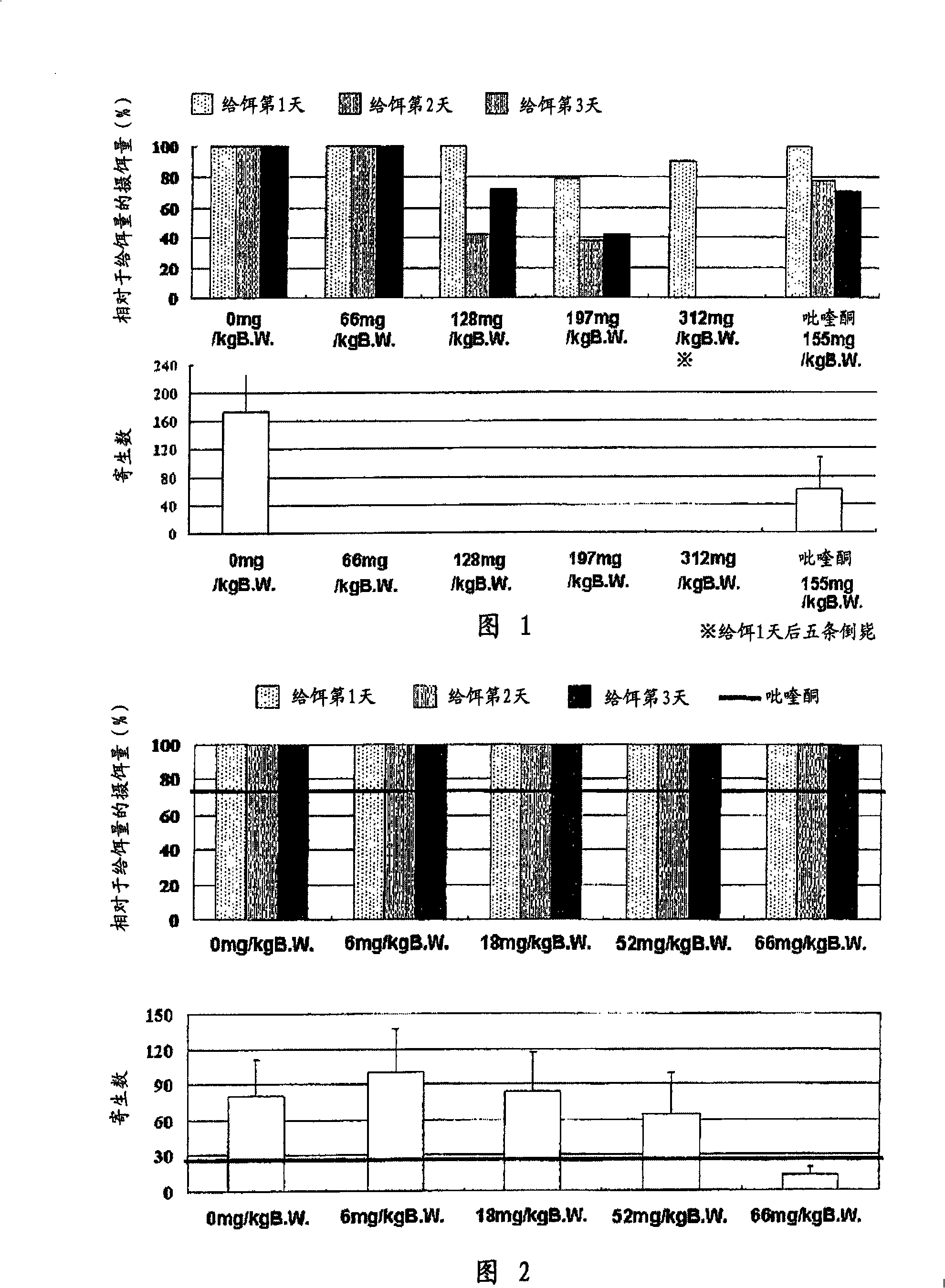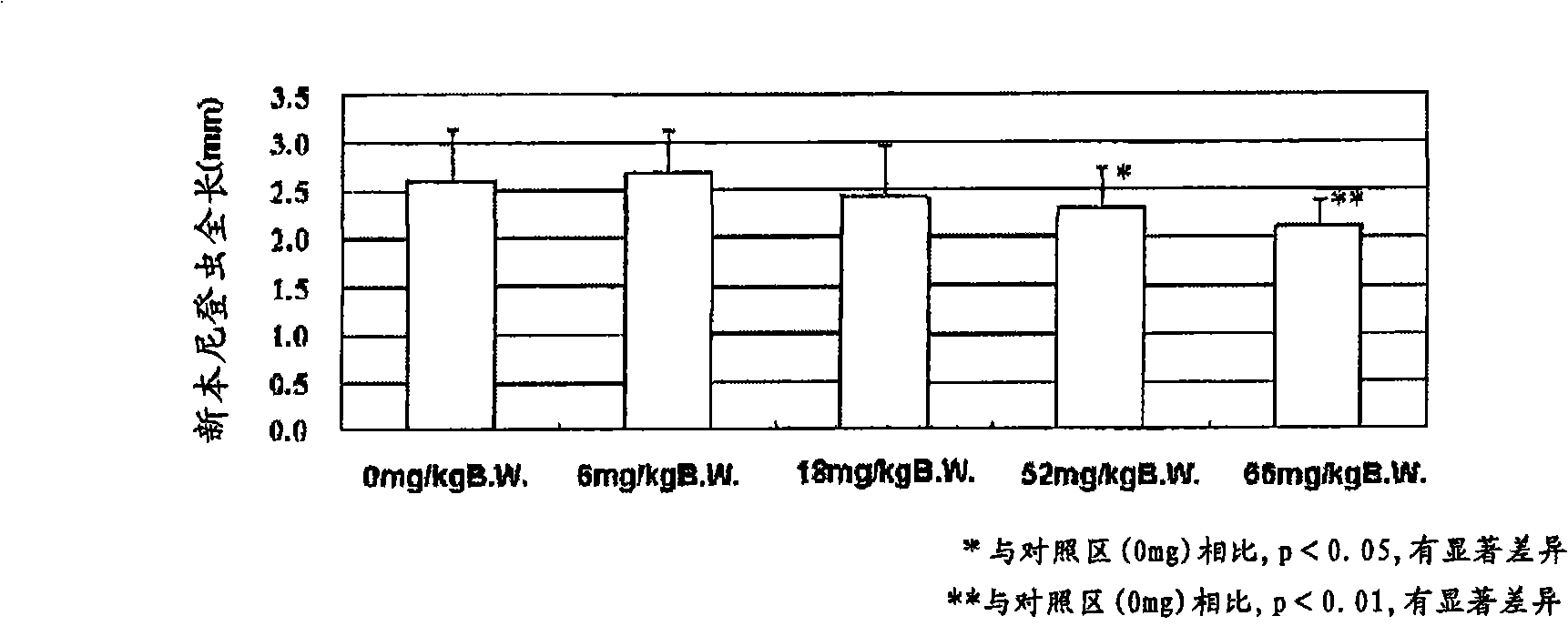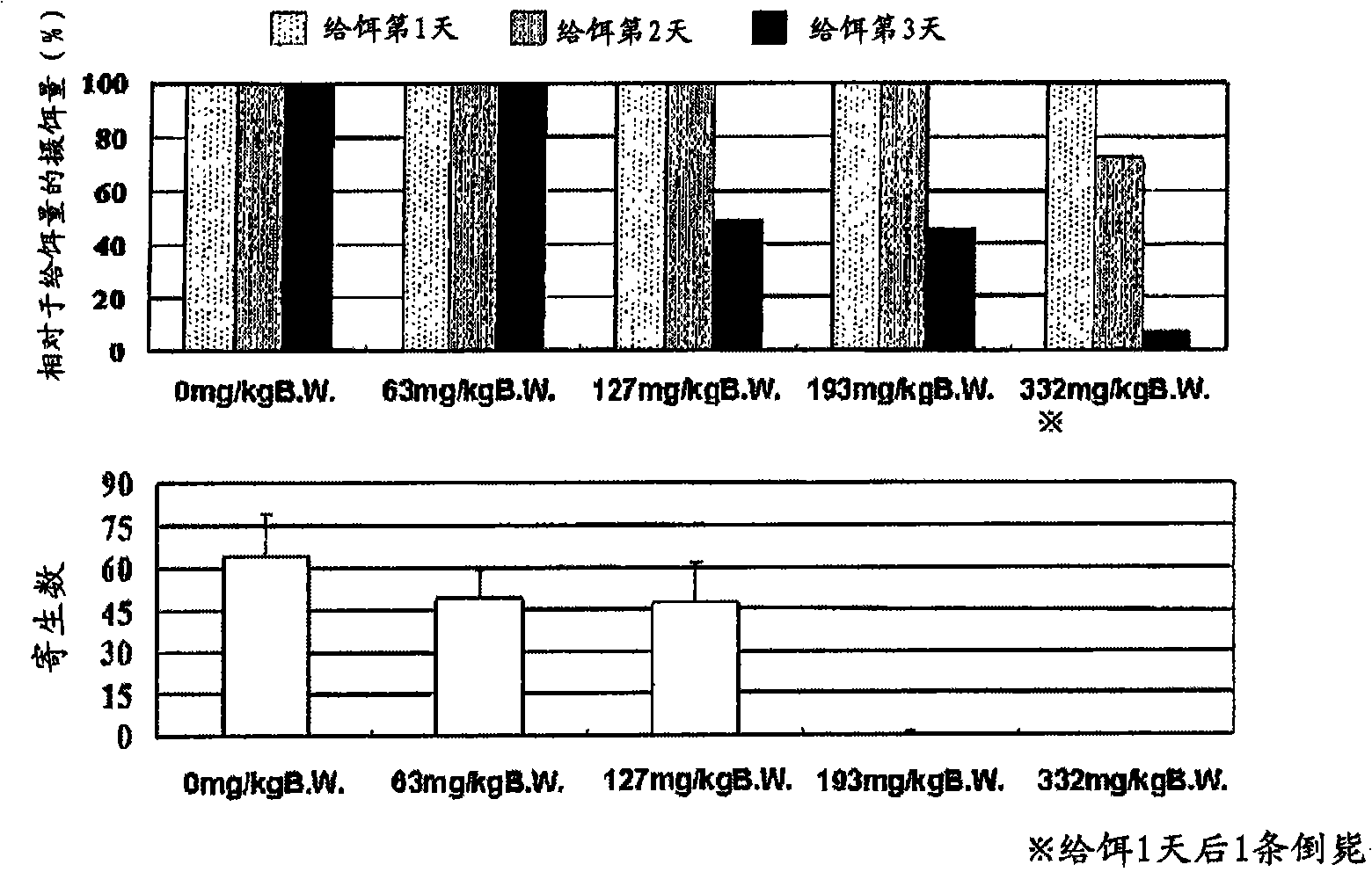Method of removing parasites on body surface of fishes
A technology for parasites and fish, applied in the field of expelling parasites from the body of fish, can solve problems such as unspecified solutions and legacy
- Summary
- Abstract
- Description
- Claims
- Application Information
AI Technical Summary
Problems solved by technology
Method used
Image
Examples
Embodiment 1
[0051]
[0052] Test method: 60 flounder with an average fish weight of about 78g were raised in a 200-liter water tank for about 7 days, and acclimated at a water temperature of 25°C. The bait therein is commercially available feed, so that the bait rate is 1.5% of the fish body weight. Water injection was 2.4 liters / minute. Parasite infection was carried out as follows: 200 liters of water tank was made into still water, about 12,000 Neobenedenia hatching larvae were thrown in, and fish were exposed to parasites for 1 hour. After infection, put 10 in each of six 100-liter tanks. Water injection during feeding was 1.2 L / min. The commercially available feed was given within 7 days after making it infected, and the feeding rate was 1.5% of the fish body weight. 8 to 10 days after infection, the test feed was given to each area. The feeding rate of the test feed was 1% of the fish body weight. On the 11th day after the infection, all the fish were sampled, and Neobenedeni...
Embodiment 2
[0057]
[0058] Test method: 50 flounder with an average fish weight of about 29g were raised in a 200-liter water tank for about 7 days, and acclimatized at a water temperature of 25°C. The bait therein is commercially available feed, so that the bait rate is 1.5% of the fish body weight. Water injection was 2.4 liters / minute. The parasite infection was carried out as follows: a 200-liter tank was made into still water, about 10,000 Neobenedenia hatching larvae were thrown in, and the fish were exposed to the parasite for 1 hour. After infection, store 10 in each of five 100-liter tanks. Water injection during feeding was 1.2 L / min. The commercially available feed was given within 7 days after making it infected, and the feeding rate was 1.5% of the fish body weight. 8 to 10 days after infection, the test feed was given to each area. The feeding rate of the test feed was 1%. On the 11th day after making it infected, all the fish were used as samples to count the Neoben...
Embodiment 3
[0063]
[0064] Test method: 50 amberjacks with an average fish weight of about 24 g were raised in a 200-liter water tank for about 7 days, and acclimatized at a water temperature of 25°C. The bait therebetween is a commercially available feed, so that the bait rate is 4% of the fish body weight. Water injection was 2.4 liters / minute. The parasite infection was carried out as follows: a 200-liter tank was made into still water, about 10,000 Neobenedenia hatching larvae were thrown in, and the fish were exposed to the parasite for 1 hour. After infection, store 10 in each of five 100-liter tanks. Water injection during feeding was 1.2 L / min. Commercially available feed was given within 7 days after making it infected, and the feeding rate was 4% of the fish's body weight. 8 to 10 days after infection, the test feed was given to each area. The feeding rate of the test feed was 2% of the fish body weight. On the 11th day after making it infected, all the fish were used as ...
PUM
 Login to View More
Login to View More Abstract
Description
Claims
Application Information
 Login to View More
Login to View More - R&D
- Intellectual Property
- Life Sciences
- Materials
- Tech Scout
- Unparalleled Data Quality
- Higher Quality Content
- 60% Fewer Hallucinations
Browse by: Latest US Patents, China's latest patents, Technical Efficacy Thesaurus, Application Domain, Technology Topic, Popular Technical Reports.
© 2025 PatSnap. All rights reserved.Legal|Privacy policy|Modern Slavery Act Transparency Statement|Sitemap|About US| Contact US: help@patsnap.com



